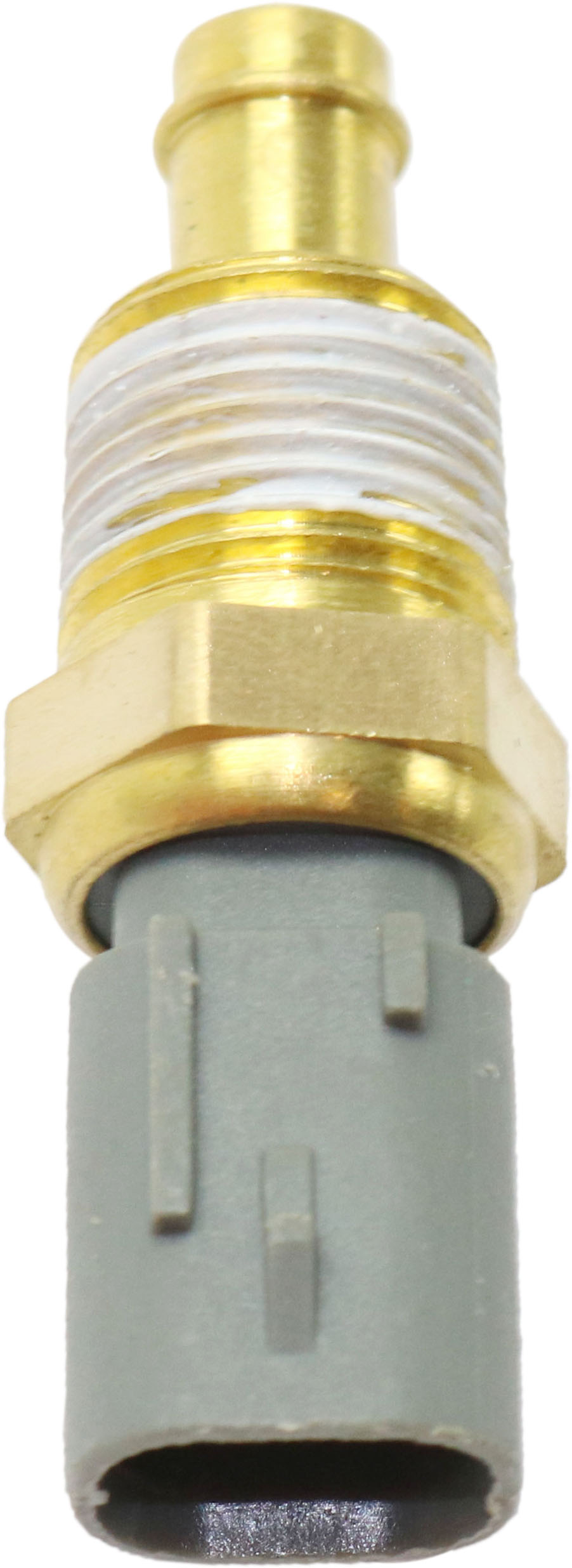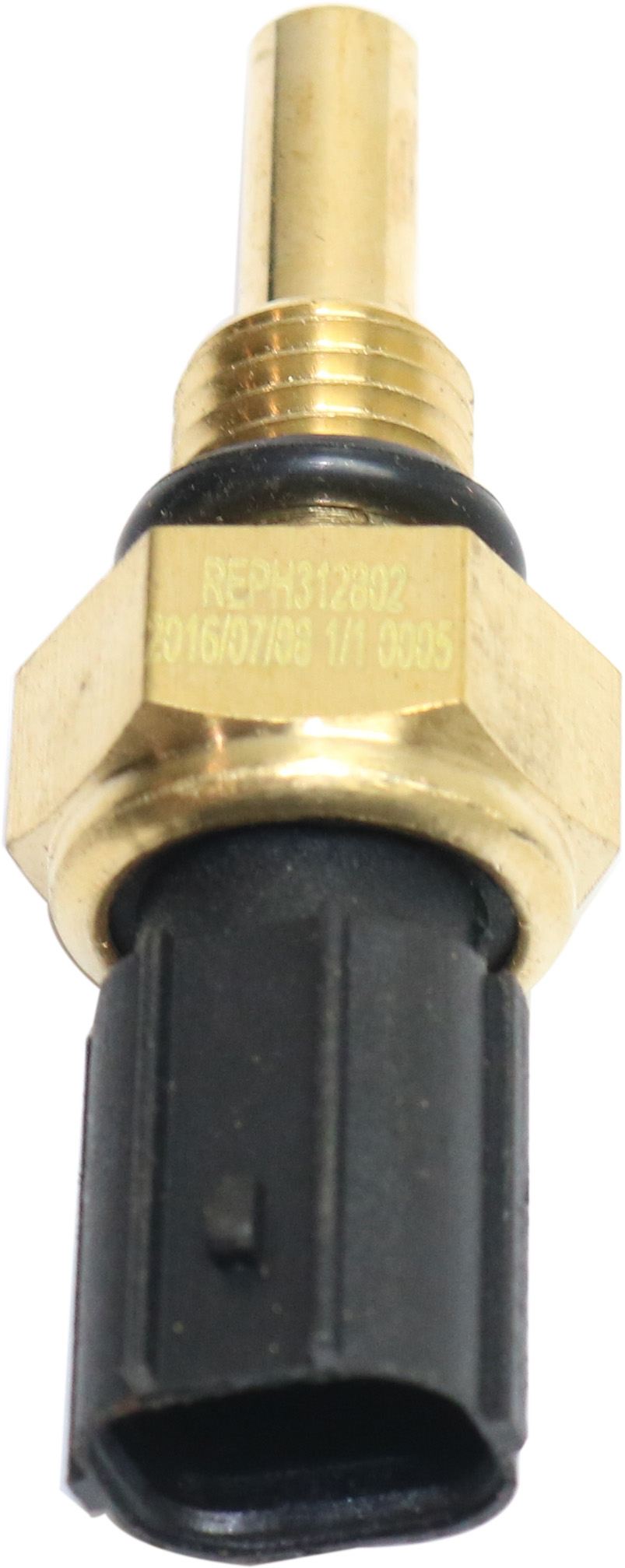Sensors provide the powertrain control module (PCM) with data to help it gauge how well the engine is running. The engine coolant temperature (ECT) sensor is one such part, and it’s crucial to the overall operation of your vehicle. Here’s everything you need to know about it.
What Is the Engine Coolant Temperature Sensor?
The ECT sensor measures the coolant temperature in the cooling system, which lets the PCM control the spark timing and fuel mixture.
When the engine is cold, the PCM adjusts the fuel mixture to be richer than normal to prevent the engine from stalling and stumbling. When it’s warm, the engine gets a leaner-than-normal fuel mixture to maximize fuel economy while releasing the lowest possible exhaust emissions.
The ECT sensor is a high-authority sensor whenever the engine is cold because ignition timing is tailored according to the engine coolant temperature. It also provides input for idle air control (IAC) position, oxygen sensor closed-loop status, on/off times for the canister purge, and idle speed.
Some vehicles (like those from Chrysler and General Motors) have a step-up resistor that broadens the ECT sensor’s range. This extra circuit gives the PCM a more accurate engine coolant temperature reading compared to having one circuit.
Where Is the Engine Coolant Temperature Sensor Located?

The ECT sensor is typically near the thermostat in the cylinder head or thermostat housing. Many vehicles also have a second ECT sensor on a different part of the engine or radiator. Consult a repair manual or repair database to determine the location of your car’s ECT sensor.
How Does an ECT Sensor Work?
ECT sensors are made of a semiconductor material that decreases in resistance as the sensor temperature increases.
It has a high resistance when the coolant is cold and a low resistance when the coolant is hot, which is also referred to as having a negative temperature coefficient (NTC).
If the ECT sensor’s wiring connector is damaged, it can produce a high resistance and cause the PCM to supply a richer-than-normal fuel mixture.
What Are the Signs of a Bad Engine Coolant Temperature Sensor?
A faulty engine coolant temperature sensor affects the way the PCM supplies fuel to the engine, which can reduce the vehicle’s engine performance. Here are the most common symptoms that you might notice when your vehicle has a bad ECT sensor.

Poor Mileage
If the ECT sensor sends the wrong signal to the PCM (the engine is hot or cold when it’s not), the computer can produce an incorrect air-fuel mixture and cause the engine to consume too much fuel.
Hard Starting Engine
The PCM relies on the ECT sensor to control the spark timing and the amount of fuel to be injected into the engine. So if the sensor fails, you could have a difficult time getting the engine to start.
Overheating Engine
In most vehicles, the cooling fan uses the same sensor as the one on the engine coolant, which means it also relies on the PCM for input. If the PCM receives the wrong signal from the ECT sensor, it can stop the fan from working and cause the engine to overheat.
Inaccurate Temperature Gauge Readings
One of the bad temperature sensor symptoms in a car is an inaccurate temperature gauge reading. A malfunctioning temperature coolant sensor will feed the car’s computer incorrect information, leading to a false reading on the instrument panel.
Rough Idling
An incorrect fuel mixture due to a faulty ECT sensor can cause the vehicle to have a rough idle.
Illuminated Check Engine Light
Any problem with the ECT sensor and its circuit can trigger the check engine light.

Black Smoke Emissions
A faulty ECT sensor can cause the PCM to produce a richer-than-normal fuel mixture. As the excess fuel burns inside the tailpipe, it might produce thick, black smoke.
What Are the Trouble Codes Related to a Faulty ECT Sensor?
Any problem with the ECT sensor can cause the PCM to log a diagnostic trouble code (DTC). Here are the most common ones that a scan tool might recognize.
- P0116 Code: Engine Coolant Temperature Sensor 1 Circuit/Range Performance
- P0115 Code: Engine Coolant Temperature Sensor 1 Circuit
- P2185 Code: Engine Coolant Temperature Sensor 2 Circuit High
- P0117 Code: Engine Coolant Temperature Sensor 1 Circuit Low
- P0119 Code: Engine Coolant Temperature Sensor 1 Circuit Intermittent/Erratic
What Else Causes Bad Temperature Coolant Sensor Readings?
It’s important to note that the ECT unit won’t always be the problem. More often than not, you can blame wiring faults and loose or corroded connectors for the errors with the temperature coolant sensor.
In addition, you may want to take a peek at the thermostat. What does a coolant temp sensor have to do with the thermostat? Well, the coolant sensor’s job is to read the engine’s temperature, which is influenced by the thermostat. This means the ECT is also heavily reliant on the thermostat. If the thermostat is stuck open or otherwise compromised, the engine won’t reach its optimal temperatures, and the ECT will give low readings as a result.
Before purchasing a new temperature coolant sensor, you might want to inspect these other causes first.
How to Replace a Bad Engine Coolant Temperature Sensor
To determine whether the ECT sensor meets certain specifications or not, use a multimeter. If the resistance values do not match, you’ll probably need to get a new one.
If you’re not familiar with the process of replacing the ECT sensor, it might be best to have a certified mechanic do the job for you to ensure that all steps are followed correctly. But if you’re a seasoned DIYer who knows how to replace faulty car parts, make sure to have the right repair manual before proceeding.
Finding the Right Coolant Temperature Sensor For Your Ride
Knowing your vehicle’s specifications is crucial in finding a direct-fit replacement for your damaged engine coolant temperature sensor. And here at CarParts.com, we’ve made your job easy with our website’s vehicle selector. All you have to do is enter your vehicle’s year, make, model, and engine size, and our catalog will show you all compatible ECT sensors for your daily driver.
On hand and ready to ship, our ECT sensors also come with a low-price guarantee, so you can get your vehicle back into shape without going over budget for your repairs. Order today, and we’ll deliver the part you need straight to your doorstep in as fast as two business days.
Shop this Project



Any information provided on this Website is for informational purposes only and is not intended to replace consultation with a professional mechanic. The accuracy and timeliness of the information may change from the time of publication.
































